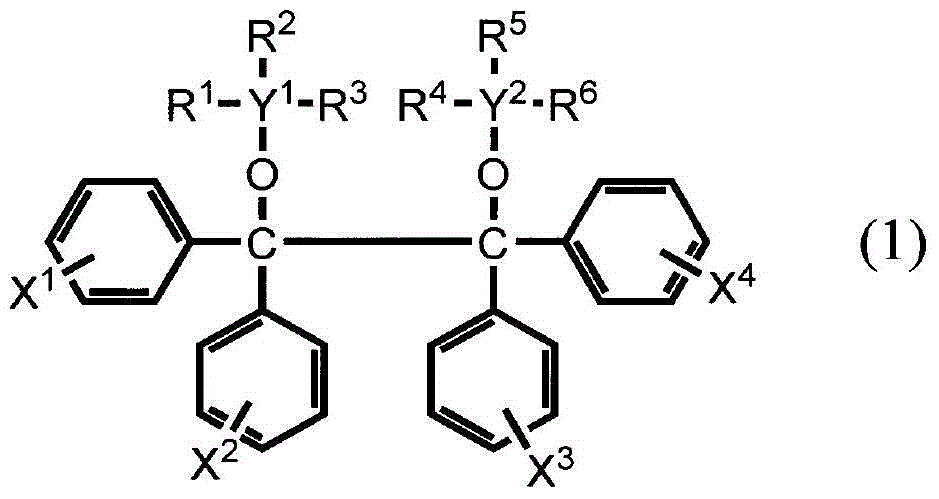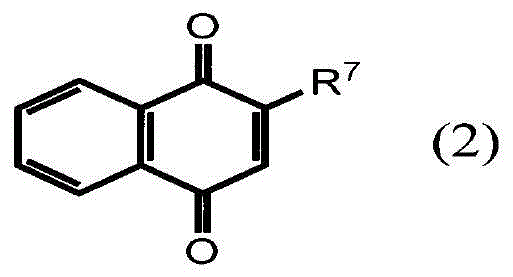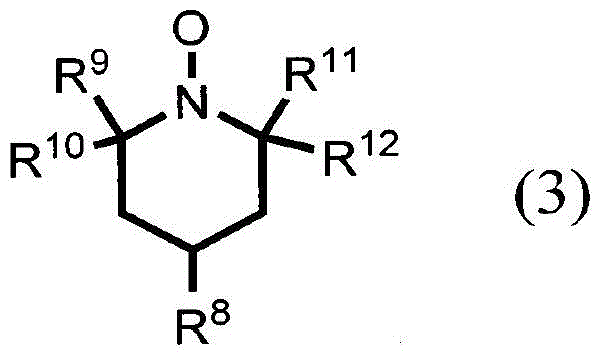Liquid crystal sealant and liquid crystal display cell using same
A technology of liquid crystal sealant and liquid crystal dropping method, which is applied in the directions of instruments, optics, nonlinear optics, etc., can solve the problems of not achieving thermal reactivity or curing of light-shielding parts, poor storage stability, and difficulty in sealing and coating. , to achieve the effect of good operability, excellent adhesive strength and fast curing speed
- Summary
- Abstract
- Description
- Claims
- Application Information
AI Technical Summary
Problems solved by technology
Method used
Image
Examples
Embodiment
[0082] Hereinafter, the present invention will be described in more detail through synthesis examples and examples, but the present invention is not limited by the examples. In addition, unless otherwise specified, "parts" and "%" herein are mass standards.
Synthetic example 1
[0084] (Synthesis of 1-Hydroxy-2-trimethylsilyloxy-1,1,2,2-tetraphenylethane)
[0085] 100 parts (0.28 moles) of commercially available tetraphenylethylene glycol (Tokyo Chemical Industry) were dissolved in 350 parts of dimethylformamide (dimethylformaldehyde), and 32 parts (0.4 moles) of pyridine were added thereto as a basic catalyst, 150 parts (0.58 mol) of BSTFA (manufactured by Shin-Etsu Chemical Co., Ltd.) was used as a silylating agent, and it heated up to 70 degreeC, and stirred for 2 hours. The obtained reaction liquid was cooled, and 200 parts of water was poured, stirring, and the product was precipitated, and the unreacted silylating agent was deactivated and separated. After separation by filtration, it was fully washed with water, recrystallized with acetone, and purified to obtain 105.6 parts of 1-hydroxy-2-trimethylsiloxy-1,1,2,2-tetraphenylethane (yield: 88.3%) . After HPLC analysis, it was 99.0% (area percentage). In addition, a molecular ion peak of 438 w...
Embodiment 1~5、 comparative example 1~3
[0090] (Preparation of liquid crystal sealing agent for liquid crystal dropping method)
[0091] After mixing and stirring each resin component (component (c), component (d)) in the ratio shown in Table 1 below, the radical polymerization inhibitor (component (b)) and the photopolymerization initiator (component h)) were heated and dissolved. After cooling to room temperature, add a silane coupling agent (component (f)), an inorganic filler (component (g)), a thermal radical initiator (component (a)), a thermosetting agent (component (e)), etc. , after stirring, it was dispersed in a three-roll mill, and it was filtered through a metal sieve (635 mesh) to prepare the liquid crystal sealing compound for liquid crystal dropping method of Examples 1-5. Moreover, the liquid crystal sealing compound for liquid crystal dropping methods of Comparative Examples 1-3 was produced similarly using each component shown in Table 1.
[0092] The contents of evaluation items and the results ...
PUM
| Property | Measurement | Unit |
|---|---|---|
| diameter | aaaaa | aaaaa |
| particle diameter | aaaaa | aaaaa |
Abstract
Description
Claims
Application Information
 Login to View More
Login to View More - R&D
- Intellectual Property
- Life Sciences
- Materials
- Tech Scout
- Unparalleled Data Quality
- Higher Quality Content
- 60% Fewer Hallucinations
Browse by: Latest US Patents, China's latest patents, Technical Efficacy Thesaurus, Application Domain, Technology Topic, Popular Technical Reports.
© 2025 PatSnap. All rights reserved.Legal|Privacy policy|Modern Slavery Act Transparency Statement|Sitemap|About US| Contact US: help@patsnap.com



